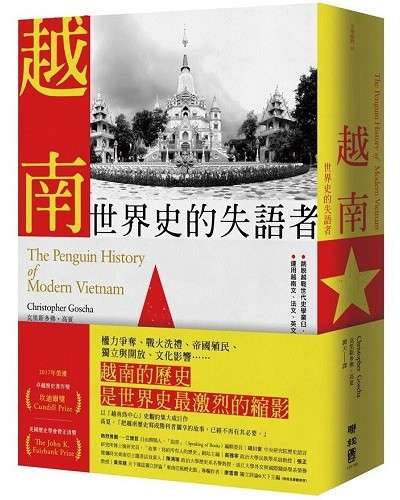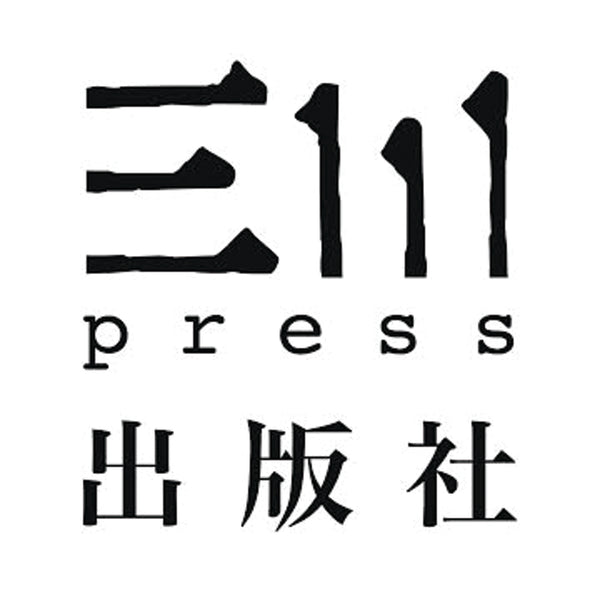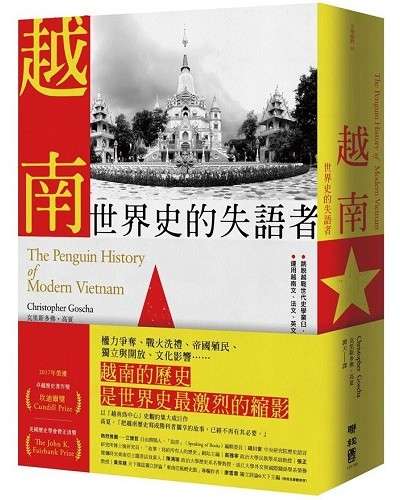Vietnam: The Voiceless World History
Vietnam: The Voiceless World History
In stock
Couldn't load pickup availability
出版社: 联经
ISBN/EAN: 9789570850994
出版日期: 2018-04-02
页数: 648页
语言: Traditional Chinese
Power struggle, baptism of war, imperial colonization, independence and openness, cultural influence...
Vietnam's history is a microcosm of world history
Breaking away from the historiography of the Vietnam War generation and challenging the Vietcong's monopoly on historical interpretation
Historian Cao Xia uses multilingual historical materials in Vietnamese, French, English and other languages to reconstruct the diverse and complete picture of Vietnamese history in his book "Vietnam: The Lost Voice of World History".
In 2017, he won the Cundill Prize for Excellence in Historical Writing.
‧The John K. Fairbank Prize of the American Historical Association
A comprehensive work with a "Vietnam-centric" historical perspective. Gao Xia: "It is no longer necessary to write Vietnamese history as a story exclusively for the victors."
Odd Arne Westad: Anyone who wants an accurate and comprehensive assessment of Vietnamese history should read this book.
Rana Mitter: Examining Vietnam from a macro perspective ensures that Vietnam is no longer just a bygone era story that has been almost forgotten during the Cold War.
Fredrik Logevall: Insightful, fair, and humane... This book will surely become a classic on this topic.
The Wall Street Journal: This book is the best option for readers who want a concise, insightful and accessible book to understand the complex and changing modern history of Vietnam.
Kirkus Reviews: "Vietnam is a country of immense importance, both in the past and in the future. This book introduces us to it in a lively and eye-opening narrative."
Vietnam, with its increasingly close ties with Taiwan, is gradually gaining importance in the world;
For Taiwanese people, it is the hometown of foreign spouses, an emerging market and a tourist destination.
From the glorious kingdom of ancient times, through French colonial rule and the tragic Vietnam War,
Today, Vietnam is moving towards independence and has become a modern country with a unique historical landscape and a blend of the old and the new.
Vietnam's past has been distorted and manipulated. Now is the time to give the right to speak back to the Vietnamese.
For centuries, the Vietnamese were both colonizers and victims of other colonizers. Their nation expanded, shrank, split, and vanished, often beyond their control. Despite these repeated pressures, the Vietnamese have survived and forged one of Asia's most distinctive and complex cultures.
As more people have visited this unique country in recent years, the need for a fundamental history has grown: a book that would allow outsiders to understand the traces left by past rulers, rebels, monks, and colonizers in Vietnam.
Gao Xia's new book, "Vietnam: The Voiceless Man of World History," fully fills this need. Drawing on his lifelong research on the Indochina Peninsula, this book maintains the reflections of a Vietnamese "insider" while remaining conceptually connected to those "outsiders." The Vietnamese repelled wave after wave of invaders, whether Chinese, French, Japanese, or American, and we witness the terrible price paid by the Vietnamese themselves. Because Vietnam was the site of one of the most protracted conflicts of the Cold War, its past has been distorted and manipulated for years in the service of propaganda. Perhaps only now can we finally see the events that shaped modern Vietnam from a truly historical perspective.
Gao Xia draws on Vietnamese, French, and English sources for this latest research. "Vietnam: The Voiceless of World History" offers a comprehensive overview of Vietnamese history while also encompassing the myriad unofficial histories, legends, differing opinions, cultures, and figures that have informed Vietnam over the centuries. This is undoubtedly a remarkable and important work.
Narrative History Centered on Vietnam
Vietnam remains at the center of intense global competition, so it's natural to view Vietnam and its history through the lens of "great power" conflict. This approach takes the perspective of those who coveted Vietnam and fought to occupy it. Viewing Vietnam as a former colony or a strategic region, or reducing it to a single war or series of wars, reduces Vietnamese history to a history of relations with external powers. Viewing Vietnam's past through an external lens can, if not carefully, present a rather one-sided picture of Vietnamese history: Vietnam simply followed the great powers' lead, playing no role of its own. According to the great power conflict theory, Vietnam was a victim of colonialism and hegemony, never a colonizer or conqueror. This narrative obscures Vietnam's internal divisions, ethnic diversity, and conflicts. "Vietnam: The Voiceless of World History" attempts to fill this gap, emphasizing Vietnam's own role in shaping Vietnamese history and highlighting the country's unique diversity and complexity.
Showcasing the diversity of Vietnam
Vietnam's modern history is so captivating because of its diverse forms of rule, ethnic and cultural differences, and its distinct experiences of colonial rule by the Chinese, French, and Vietnamese, among others. This multifaceted nature of the country has increasingly captivated scholars and has become a new direction for exploring Vietnam's general history. "Vietnam: The Voiceless of World History" explores modern Vietnam's past not from the perspective of one Vietnam, one homogeneous nation, one history, or even one colonialism, but rather through its various forms and impressive diversity.
Christopher Goscha
Professor of History at the University of Quebec at Montreal (UQAM). Trained at Georgetown University and the École pratique des hautes etudes in France, he has devoted many years to the study of Southeast Asian ethnicities, politics, and history, with particular expertise in Thailand, Cambodia, Laos, and Vietnam. He has published numerous books covering topics across Indochina. His book, The Penguin History of Modern Vietnam, won the 2017 Cundill Prize for outstanding historical writing and the 2017 John K. Fairbank Prize from the American Historical Association.
Tan Tian
He previously served as editor-in-chief of the United Daily News and deputy editor-in-chief of the Liberty Times. He currently lives in Canada and specializes in translation. He has translated over 100 books on politics, military affairs, culture, religion, science, technology, and business.
Foreword 1: The Best Key to Understanding Vietnamese History by Hu Chuan'an 2: The Monopoly of History, the Struggle of Memory by Jiang Huaizhe 3: How to Read Vietnamese History by Chen Hongyu Glossary of Terms Abbreviations Maps Table of Contents Map 1: Indochina and Han China Map 2: Rivers and Highlands Map 3: Highland Peoples Map 4: Dai Viet of the Ly Dynasty and Neighboring Countries Map 5: Warlords and Southward Expansion in Dai Viet, Tran, and Nguyen Dynasties Map 6: Dai Nam Map 7: The Establishment of French Indochina Map 8: Indochina after the Geneva Armistice
Preface Various Vietnams <br>Diverse Vietnam/Modern Vietnam/Imperialist Vietnam/Divided Vietnam
Chapter 1: Northern Situation <br>Imperial Situation / The Map of the Hundred Viet / Incorporation into the Chinese Empire / Independent Dai Viet / Imperial Ambition of the Ming and Dai Viet / Catholic Vietnam / Military Rule and the Fragmentation of Sovereignty / Warlords Split by Internal Conflict / The Emergence of an Empire in the South / Civil War and the Three Vietnams: The Tây Sơn Rebellion
Chapter 2: Division and the Meridian of French Imperialism <br>Unification of the Nation / Vietnam under Gia Long / Minh Mang's Revolution? / Catholicism in Vietnam and Minh Mang's Plan for National Construction / Internal Unrest and International Threats / The French Colonial Meridian and the Collapse of Dai Nam / French Colonial Expansion in Asia / The French Conquest of Vietnam
Chapter 3 A Changed Nation <br>Establishment of French Cochinchina / Incorporation of Annam-Tokyo into French Territory / Colonial Cooperation and Choice / Establishment of French Indochina / Resistance, Monarchy, and Choice
Chapter 4 Rethinking Vietnam <br>Reformism and Change: Asian Origins, Imperial Alliances / East Asian Reform / Phan Boi Chau and the Asian Origins of Vietnamese Reform / Colonial "I Accuse"? Phan Chau Trinh and a Republic Treaty / Civil Service Reform and Colonial Fear / Sa Ho and the Founding of Indochina / Franco-Vietnamese Cooperation Policy / Becoming an Indochinese? / King of the Republic? The Birth of the Bao Dai Solution
Chapter 5 The Failure of Colonial Republicanism <br>The Limits of Colonial Democracy: Act I The Constitutionalists / The Politicization of the New Elite—the Youth / Ho Chi Minh and Global Communism / The Limits of Colonial Democracy: Act II The Popular Front
Chapter 6 Colonial Society and Economy <br>Colonial Economy / Infrastructure and Transportation / Commercial Rice Expansion: Asian Modernization Blooms in French Indochina / Development of the Colonial Plantation Economy / An Economic Federation and the Bank of Indochina / Colonial Society / Divisions, Tensions, and Interactions / Religious Vietnam / Buddhist Vietnam / Hoa Hao and Cao Dai in the Mekong Delta / Catholic Vietnam
Chapter 7 Rival Empires and Nation-States <br>World War and the Collapse of Two Empires / The End of World War II and the Birth of the "New Vietnam" / The March 9th Mutiny and the Vietnamese Seize Power / The End of World War and the Rise of the "New France" / The Second French Colonial Conquest / The Start of the Civil War
Chapter 8 The Belligerents <br>Reshaping Cochinchina as a Colonial Weapon/A Brutal Battle for Sovereignty/The Democratic Republic of Vietnam (1945-1950): Colonial Transfer?
Chapter 9: Internationalized Belligerents <br>The United States of Vietnam: A Western-Backed Protectorate of Indochina? / Remaking Communist Vietnam: Transnational Nation-Building and Modern Warfare / Total War in the Global South? / Ending the War? / Dien Bien Phu: Using a Set-Point War to Force the French to Abandon Colonialism / Geneva 1954: The Failure of the Peace Campaign
Chapter 10 A Tale of Two Republics <br>Preface / Remaking Non-Communist Vietnam: Diem's Republic / Diem's Rise and the American-French Break / Partition, the People, and Choice / The United States, Diem, and the Making of a New Vietnam / Remaking Communist Vietnam and Ho Chi Minh's Republic / Failed Communist Reforms (1954-1959) / Asserting Republican Sovereignty in the South
Chapter 11 Towards a Vietnam <br>Restart of the Civil War / Reaffirmation of the Sovereignty of the Democratic Republic of Vietnam / The Limits of Cooperation / Kennedy's Commitment to South Vietnam / Diem: A Group of De Gaulles / Diem's Threat to the US Policy of Indirect Containment / Strategic Villages and the Melting of US-Vietnamese Relations / The Buddhist Crisis and the Overthrow of Diem / From Indirect to Direct Intervention / Hanoi Chooses Direct Intervention / Washington Chooses Direct Intervention / 1965: A Back-and-Forth Direct Intervention / A Barbaric War of Destruction / The Tet Offensive of 1968: The Limits of Traditional Warfare / The Paris Agreement and the Difficulty of Ending the War / Nixon and a Return to Indirect Containment? / The End
Chapter 12 Cultural Changes Throughout the Twentieth Century <br>Cultural Revolution in Colonial Vietnam / Between Rural Areas and East Asia / Global Cultural Change in French Vietnam / Cultural Revolution of the 1930s: The Movement for Self-Reliance / Cultural Revolution: The Broadening and Humanization of Vietnamese Society / Cultural Revolution in Postcolonial Vietnam: War, the State, and Individual Freedom / The Poverty of French Colonial Culture / Cultural Revolution, War, and the Democratic Republic of Vietnam (1945-1975) / Cultural Revolution, War, and the Republic of Vietnam (1945-1975)
Chapter 13 Tragedy and the Rise of Modern Vietnam <br>One Vietnam? / Unifying North and South / The Communist Nation in the South / Escape from Communist Vietnam / Chaos: The Collapse of Eurasian Communism in Indochina / The Vietnamese Communist Nation in Laos and the Khmer Nation / Vietnam’s Chaos in Indochina: The Khmer Rouge and National Sovereignty / The Unraveling of Eurasian Internationalism Along the Indochina Fault Line / The Defeat of the Communists? / Capitalist Revolution / Diplomatic Revolution?
Chapter 14 Vietnam Beyond the Red River <br>Before the Arrival of the Viet: Coastal and Highland Peoples of Vietnam / Where Mainland Southeast Asia Meets the Indian Ocean / Linyi and Champa on the Indian Ocean Coast / The Rise and Fall of Champa under the Red Flower Generals / Peoples of the Northern Highlands / Resisting the Viet Empire / The Cham People and the Nguyen Empire / Minh Mang and the Rise of the Cham Anti-Colonial Movement / Highland Vietnam: The Limits of Colonial Assimilation / From Imperial Order to Highland State Order? / Difficulties of the French in Establishing Control of the Highlands / Maintaining French Control in the Highlands / Nationalist Strategies and Highland Autonomy / The Warring States Period: The Divisions and Reunifications of Highland Vietnam (1954-1975) / Autonomy for the Communist Party of North Vietnam? / Decommunalization of the Republic of Vietnam
Conclusion: Autocracy, Republicanism, and Political Change <br>Maintaining Communist Legacy in a Post-Communist World / Back to the Future? Vietnamese Republicanism in the Twentieth Century / Republicanism and Communism: A Turning Point? / The Global Networking of the Vietnamese Public Sphere / Reform or Revolution?
Acknowledgements
Share


